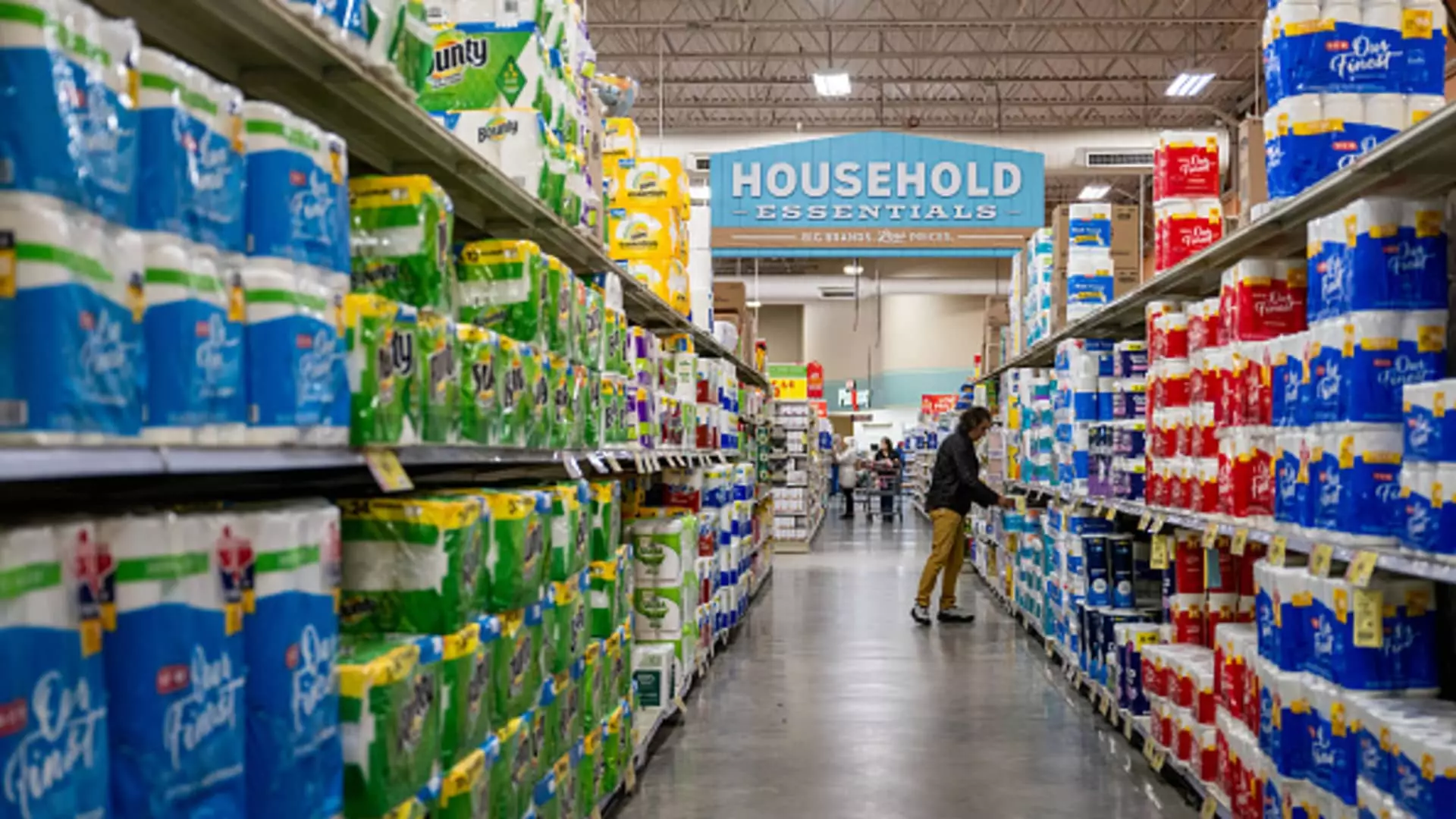In an audacious bid to revive the domestic job market, the Trump administration’s new tariffs are set to place a heavy burden on American consumers. While many may view these measures as a patriotic effort to bolster local industry, the stark reality is that the cost of everyday goods like coffee, bananas, and toilet paper is on the brink of increasing significantly. The well-intentioned “America First” doctrine has culminated in a situation that is not just economically precarious, but also detrimental to the daily lives of ordinary Americans who are already grappling with rising inflation.
As tariffs are imposed on imported goods from over 180 countries, the invisible hand of economics is squeezing the wallets of consumers. The Consumer Brands Association (CBA), a coalition of industry giants including esteemed names like Procter & Gamble and Coca-Cola, has expressed serious concerns regarding the reach and implications of these tariffs. This organization highlights a fundamental flaw in the administration’s strategy: the overwhelming reliance on ingredients and materials that are simply not produced in sufficient quantities on U.S. soil. Therein lies a troubling paradox—while the government aims to protect American jobs, its actions threaten to undermine the very businesses that contribute to the economy.
A Consequence-Laden Landscape
One cannot help but question the effectiveness of tariffs toward achieving their purported goal. The suggestion that they could be a cure-all for America’s manufacturing woes is, at best, naive. For instance, take coffee, a beloved staple that many view as an indispensable part of their morning routine. U.S. consumers are reliant on imports from countries like Guatemala, which now faces a 10% tariff that will inevitably trickle down to the shopper at their local grocery store. What about the iconic vanilla bean that flavors so many American desserts? With Madagascar producing over three-quarters of our vanilla imports and facing an astronomical 47% tariff, bakers will suffer the consequences of these ill-conceived economic policies.
Moreover, the shifting dynamics of U.S. agriculture further exacerbate the problem. The CBA underscores a painful irony: a substantial percentage of oats used in popular cereals now arrives from Canada, largely because domestic production has plummeted over the last century. How can we chip away at the problems in the labor market without addressing the fundamental issue of supply? It seems that the administration’s vision of a self-sufficient economy is clouded by shortsightedness and an acute disregard for how interconnected our global supply chains truly are.
The Price We Pay Beyond Food
It’s not just culinary staples that are at risk of soaring prices. Everyday household necessities, from toilet paper to diapers, are also poised for significant hikes. Producers who depend on imports for raw materials—such as wood pulp, bamboo fibers, and shea butter—are likely to pass on these added costs to consumers. The idea of filling a shopping cart while bracing for greater prices at checkout is far from a pleasant thought. Furthermore, as manufacturers strategize to cope with tariffs, the basic quality of these goods may also dwindle, turning a simple purchase into a consumer gamble.
In a seemingly ironic twist, stock market reactions tell another story. While the broader markets plummeted in response to the tariff announcement, shares of consumer staples companies crept upwards, highlighting a shift where investors seek refuge in everyday products deemed essential. This illustrates a broader existential question: are we inadvertently reinforcing systems that prioritize short-term profits at the expense of consumer well-being?
Ultimately, the ramifications of the tariffs will ripple through American society in the coming weeks and months. As prices for familiar products rise, there lies a deep-seated concern for income disparity, as the pinch will be felt more acutely by those already struggling to make ends meet. The promise of job creation may ring hollow when the cost of living creeps inexorably upward, slipping further out of reach for countless families.
As we grapple with a changing economic landscape, the urgent challenge remains: how can we foster a robust, equitable economy while still appreciating the essential interdependencies that make modern life possible? The road ahead is fraught with complexity, and it’s time we recognize that tariffs, while perhaps well-intentioned, could cause more harm than good for the average American consumer.


Leave a Reply